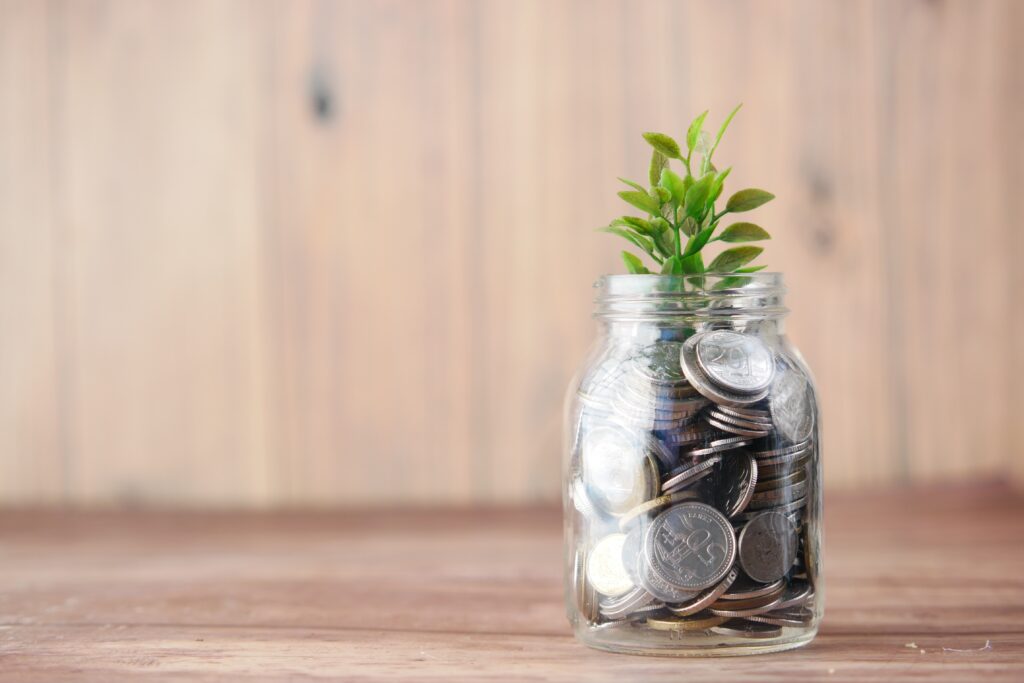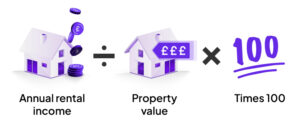
If you’re thinking about buying property to rent out, it’s important to understand rental yield. No idea what that is? Don’t worry – this guide breaks everything down for you.
In a nutshell: being able to calculate rental yield, and know when a property has a ‘good’ or ‘bad’ rental yield, helps you make smarter investment decisions. Here’s all you need to know.
Rental yield is the return on investment a property gets from rental income. It’s a simple calculation that shows the amount of rent a property is expected to get in a year, expressed as a percentage of the property’s purchase price or current market value.
Landlords and investors use rental yield to make more informed decisions when it comes to which Buy to Let properties they invest in. And they also use it to monitor the financial performance of their property investments over time. Monitoring rental yield can help to show if a certain property is underperforming, for example.
It’s important to note that rental yield isn’t the only thing you need to think about when it comes to making investment decisions. For example, you’ll also need to look at tenant demand in the area to avoid ending up with long void periods (where no one’s renting your property).
You might also want to look how likely it is that house prices will go up in the area, as this can help you make a more profitable investment.
You can calculate rental yield based on either the purchase price of a property, or its current market value. Using purchase price gives you a more accurate view of what return on the actual money invested in the property you can expect.
On the other hand, calculating rental yield based on the current valuation of a property gives you a better understanding of the current performance of your investment. Purchase price rental yield calculations make it easier to compare your property to other investments available on the market today, for example.
There are two different types of rental yield calculation – ‘gross rental yield’ and ‘net rental yield’:
The formula for calculating rental yield is actually pretty simple. Here’s a quick step-by-step guide for both gross and net rental yield:
To calculate a property’s gross rental yield:

Here’s a quick example of the gross rental yield formula:
A property’s purchase price is £200,000.
It’s expected to make £1000 a month in rental income.
The gross rental yield for this property is 6%.
Gross rental yield is used when you (or a mortgage lender) don’t know how much the expenses associated with running a property will be.
It can be a handy way to quickly gauge how profitable a property might be. For example, if you’re looking at multiple potential properties to grow your portfolio, gross rental yield can provide you with a snapshot of their potential profitability.
But it’s important to note that this figure doesn’t take into account all the running costs of a property – unlike the net rental yield formula👇.
To calculate a property’s net rental yield:
Here’s a quick example of the net rental yield formula:
A property’s purchase price is £200,000.
It’s expected to make £1000 a month in rental income.
The total ownership/running costs of the property come out at £5000 for the year.
The net rental yield for this property is 0.35%.
Generally, between 5-8% is considered a good rental yield. But there are a lot of factors to consider. For example, rental yields in different areas vary, with some northern cities like Manchester and Liverpool offering higher rental yields than areas where property prices are higher, like London.
When it comes to deciding whether a property is a good investment opportunity, the most crucial thing is to make sure you’ll be able to charge enough rent to cover all your mortgage repayments and expenses. After that, rental yield helps you gauge how profitable a property might be.
For example, if a property is expensive but the rent in the area is generally low because of market saturation, the rental yield will be low. This means it might not be a very profitable endeavour. Whereas a property with a high rental yield has more promise, in terms of profitability from rental income.
Having said that, some landlords prefer to play the long game, investing in properties with lower rental yields but where the house prices grow much more over time. (More on this below.)
According to recent data from Propertydata.co.uk, the estimated average rental yield in the UK is currently 4.75%.
According to recent research carried out by Zoopla, Scotland has the best gross rental yields in the UK, with recent hotspots including East Ayrshire (8.48%), West Dunbartonshire (8.40%), North Lanarkshire (8.07%), Renfrewshire (7.97%) and North Ayrshire (7.94%).
Following Scotland are areas in the North East of England, including Hartlepool (7.80%), Middlesbrough (7.64%) and Sunderland (7.61%).
The rental yields are particularly high in these areas because the property prices are low, leaving room for a bigger return on investment. On the flip side, areas where the property prices are very high tend to have the lowest rental yields. For example – areas in London, like Kensington & Chelsea (3.30%) and the City of Westminster (3.63%), as well as other areas in the South of England, including St Albans (3.85%) and New Forest (3.95%).
As mentioned above ☝️ not all landlords automatically want to go for properties with higher rental yields. Many landlords choose to invest in areas where properties are likely to grow more in value over time. These areas might have lower rental yields, but promise higher return on investment from a capital growth point of view.
On the other hand, some landlords prefer to prioritise cash flow, opting to invest in areas with higher rental yields so they can make more money from rental income.
With all this in mind – remember that rental yield is just one way to measure the profitability of a property investment. In other words: it’s not enough to base decisions off rental yield alone – you’ll need to think about your wider investment strategy, too.
If you’re struggling with low rental yields, there are a number of ways you can try to increase the revenue you make from your properties:
We’ve made it easy for you to see all your properties’ rental yield information in our app. See the gross rental yield for each property based on either its purchase price or current valuation, and expected rental income. Plus, access lots of other valuable property investment insights, updated in real time.